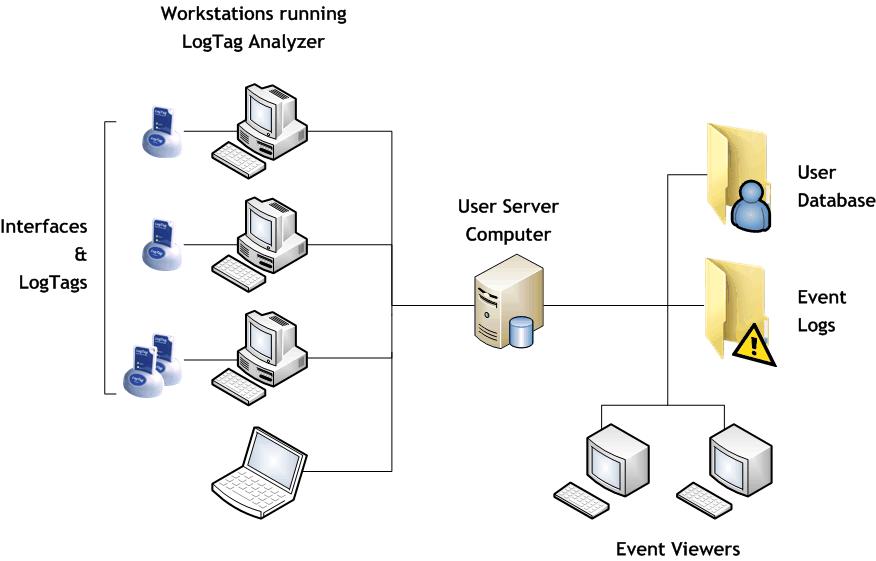The customer software is LogTag Analyzer.
This is the standard software for reading and configuring Loggers and runs on computers that are reading, displaying and storing recorded data.
The server software is LogTag User Server needs to be set up with the help of your IT manager. With the User Server software users can provide a digital signature on their reports.
User Server typically runs on a server station in a networked computer system but can also operate on the same computer as LogTag Analyzer provided security issues are observed.

More information about our User Server software (including download links) can be found here
and use the User Guide for more extensive information.
en/faq/other-topics/using-user-server-software-only-for-networks/
WHY ARE TEMPERATURE BUFFERS USED?
When selecting a data logger/external probe combination you would typically try to find a combination with a fast response time to temperature changes, so you always record the most accurate environmental condition. This is, however, not always desired if you want to understand what the temperature profile inside a closed container or vial looks like. Air temperature inside a fridge or freezer can change quite rapidly, for example when the fridge door is opened, or goods are added to the fridge that are not at fridge temperature, but such a change does not mean a container with a liquid inside would also instantly change to this temperature.
Ideally, you would add the external probe directly into the sample, but it is not always practical to do so. For this reason, a temperature buffer, also known as a thermal buffer, is recommended for particular applications in the pharmaceutical and medical industry.
These buffers are designed to mimic the thermal behavior of goods by providing additional thermal mass to the sensing element of an external temperature probe. As a result, the probe reacts slower to external temperature changes, just as a vaccine vial would that was exposed to this change.
WHAT WE OFFER!
Some manufacturers of data loggers provide metal discs for this purpose, or special clamps that bonds the probe thermally to a sample vial.
We at LogTag North America offer special Glycol buffer bottles for our range of external probes. You can fill these buffers with Glycol for use in temperatures down to around -40 ºC (-40 ºF), or with Silica sand for temperatures below -40 ºC (-40 ºF).
They come in two different volumes, with two different caps on offer to suit the different diameter of our probes. Each bottle also comes with a spill-proof seal, and an optional stand that prevents tipping in the fridge or freezer, but does not include a probe, you will have to purchase that separately.
A Glycol bottle should not be used without a medium inside (Glycol or sand). If it were used without a medium, this would potentially introduce an unacceptably high thermal lag, as the bottle itself will form a micro-climate. The medium in the bottle, be it glycol or sand, is added so there is a temperature equilibrium of the bottle with the environment, which is transferred to the probe. The medium has better heat transfer capability than air.
You can, of course, use all our external probes without any buffer if you need them to be more responsive to environmental changes, or for example, if governing bodies do not recommend the use of a buffer.